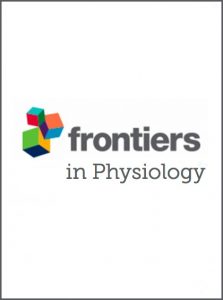Publications

Influence of Strength, Power, and Muscular Stiffness on Stroke Velocity in Junior Tennis Players
Authors: Joshua Colomar 1, 2, Ernest Baiget 3, Francisco Corbi 4
Affiliations:
- National Institute of Physical Education (INEFC), University of Barcelona, Barcelona, Spain
- Sports Science Department, Academia Sánchez-Casal, Barcelona, Spain
- Sports Performance Analysis Research Group (SPARG), University of Vic – Central University of Catalonia, Vic, Spain
- National Institute of Sport and Physical Education (INEFC), University of Lleida, Leida, Spain
Journal: Frontiers in Physiology - March 2020, Volume 11, Article 196 (DOI: 10.3389/fphys.2020.00196)
-
Field & Applications:
- Sport
- Muscle development / Performance
- Reliability
Objective: The main aim of this study was to establish the relationship between strength, power characteristics, individual muscle stiffness, international tennis number (ITN), and stroke velocity (StV) in junior tennis players.
Methods: Twenty one junior male tennis players (mean ± SD; age, 17.0 ± 0.8 years; height, 1.8 ± 0.1 m; body mass, 72.3 ± 5.8 kg; BMI 22.1 ± 1.5 kg/m2), with an ITN ranging from 2 to 4, performed measurements regarding muscle stiffness of selected muscles involved in tennis strokes. StV (serve, forehand, and backhand), strength (maximum isometric strength) and power (medicine ball throws, squat jump, countermovement jump, and bench press) measurements were also performed (ICC = 0.803–0.998; CV = 0.3–6.4).
Results: Moderate inverse correlations were found between serve velocity (SV) and ITN (r = −0.43; p = 0.05), and large positive correlations were observed between pectoralis majoris stiffness (PMStiff) (r = 0.53; p = 0.01), isometric wrist flexion (r = 0.58; p = 0.006) and ITN, respectively. PMStiff was moderately inversely correlated to forehand velocity (FV) (r = −0.45; p = 0.03) and gastrocnemius (GStiff) and infraspinatus stiffness (IStiff) positively to SV (r = 0.45; p = 0.04; r = 0.42; p = 0.05). No significant correlations were found regarding strength and power measurements.
Conclusion: Greater stiffness values may enhance StV, especially when transferring power from lower to upper body. On the other hand, high scores could interfere in technical parameters that are key for velocity production in complex tennis strokes. Strength and power values proved to correlate poorly to StV in this particular sample of junior tennis players, possibly due to the multifactorial nature of tennis strokes and the possibility that they become more important as age and level increase.
Keywords: Serve, Forehand, Backhand, Speed, Testing
In conclusion, an increased GStiff and IStiff seem to correlate to greater SV and high values of PMStiff affect negatively the player’s FV. Greater stiffness values of the gastrocnemius may enhance StV, possibly supporting power transfer from lower to upper body. On the other hand, enhanced levels in muscles surrounding the shoulder complex could interfere in technical parameters that are key for velocity production in complex tennis strokes. Also, SV is inversely correlated to ITN, indicating that players with a higher number in this rating seem to serve faster. Moreover, strength and power values proved to correlate poorly to StV in this particular sample of junior tennis players. Results indicate that athletes of these characteristics that are able to reach higher velocity production in the serve and groundstrokes don’t specifically rely on the assessed strength and power characteristics, possibly due to the multifactorial nature of tennis strokes and the possibility that they become more important as age and level increase.


